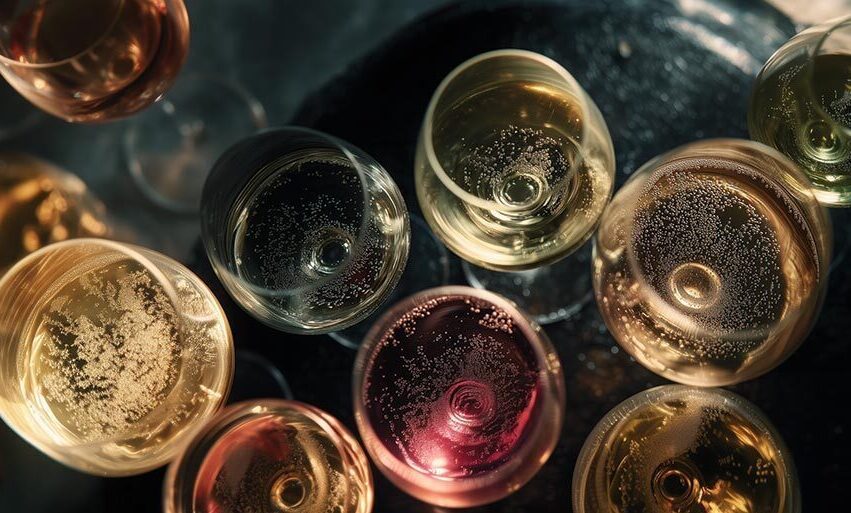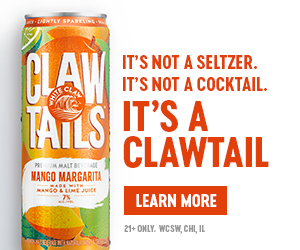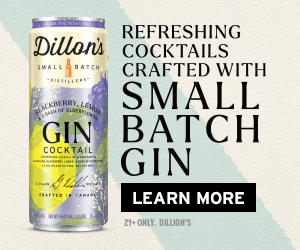

Ryan Robinson, Director of Education, Brescome Barton and Worldwide Wines.
Finding Alternative Sparkling Wines
By Ryan Robinson, Advanced Sommelier-CMS, WSET Diploma and WSET Educator
The days are getting longer and warmer, and the deer have eaten all my tulips before they could bloom, all signaling that summer is around the corner. With this change, I am always looking for new wines from emerging regions to add a little adventure to the sunny season. I have been and always will be a sparkling wine fanatic. I could live off Champagne. I enjoy it so much that my dog is named after my favorite wine, the Tête Cuvée, Sir Winston Churchill.
Whether you are poolside, backyard barbecuing or just unwinding, bubbles have a way of setting the mood. And while Champagne has earned its reputation as the world’s go-to for festive bubbles, it’s far from the only game in town. There are many exciting new styles that accommodate almost any occasion. This summer, let’s take a look at some sparkling wines from unexpected places—Brazil, England, Austria, Hungary and Slovenia.
Brazil is better known for Carnival and caipirinhas than Chardonnay and Pinot Noir, but that’s starting to change. In the southern part of the country, farther from the equator, in regions like Serra Gaúcha and Pinto Bandeira, producers are crafting traditional-method bubbles that are light, tropical and surprisingly elegant. The southernly latitude coupled with the elevated altitude helps keep acidity high, and the wines reflect both craftsmanship and a real sense of place. These wines are still limited in selection in the New England market, but hidden gems can be found.
Just a hop across the Atlantic, England has stepped up in a big way thanks to its chalky soils—an extension of those found in the famed Champagne region. Cooler-climate areas found in Sussex, Kent and Hampshire have become hotbeds for high-acid, refined sparkling wines. These areas mirror Champagne’s geology, and producers like Nyetimber and Gusbourne are making wines that are giving the French a run for their money. So much so that the large Champagne houses, such as Pommery, are investing in new English properties. These English fizz wines are crisp and clean, and pair as easy with fried fish as they do with oysters and roast chicken. If you’re a fan of racy citrus, green apple and hints of toast, England should be high on your list.
An area known for producing world-class Grüner Veltliner has stepped onto the world’s sparkling wine stage with Austria’s Sekt. Historically, this style used to fly under the radar but no longer. For years, local producers quietly crafted delightful sparkling wines for domestic consumption often served in the wineries’ own taverns or Heurigen. But today, thanks to increased regulation and a renewed focus on quality, Austrian Sekt, especially from regions like Niederösterreich and Steiermark, is getting serious attention. The somewhat newer Grosse Reserve category, which mandates extended lees aging, is a great place to start for depth and structure. Wines made from Grüner Veltliner and Welschriesling tend to be spicy, dry and refreshingly sharp. They’re perfect alongside summer salads, schnitzel or just a cool evening on the patio.
Hungary might surprise you with its sparkling offerings too. In a country where the lusciously sweet wines of Tokaj reign supreme, the region is increasingly turning out compelling Pezsgő (Hungarian for “sparkling wine”). The region of Etyek-Buda is at the center of this movement, with limestone soils and cool nights giving structure to wines made from native grapes like Furmint and Hárslevelű. These wines are zipping with freshness and laden with minerality. They are often accompanied by a savory edge and a touch of salinity. More of these producers are making their way into the New England market.
Then, there’s Slovenia: a country that rarely makes wine headlines but absolutely should. In areas like Goriška Brda and Podravje (good luck on the pronunciation), winemakers are producing elegant, high-acid sparkling wines under the label Penina (Slovenian for “sparkling wine”). Rebula, also known as Ribolla Gialla, plays a big role here. These wines bring a sense of familiarity, as they are often blended with Chardonnay or Pinot Noir, and are lean, textured and often quite expressive.
And while we’re looking off the beaten path, keep an eye on India. Yes, India. Sparkling wines from the Nashik Valley and Karnataka are gaining traction, with producers like Sula Vineyards and Chandon India exploring both traditional and Charmat methods. These wines are tropical, light and incredibly easy to enjoy. They may not be on your local shop’s shelf yet, but don’t be surprised if you start hearing more about Indian bubbles soon.
Ryan Robinson is the Director of Education for Brescome-Barton Inc., and Worldwide Wines in Connecticut, an Adjunct Professor at the University of New Haven, and is the Principal at SommCentric, a beverage education and consulting agency. He is a member on the USA Wine Tasting Team, representing the United States and the World Wine Tasting Championships and holds the credentials of Advanced Sommelier-CMS; WSET Diploma and WSET Educator in Wine, Sake and Beer; Rioja Wine Educator; VIA Italian Wine Ambassador; Wine Scholar Guild Educator and Italian and Spanish Wine Specialist; and Certified Scotch Whisky.





